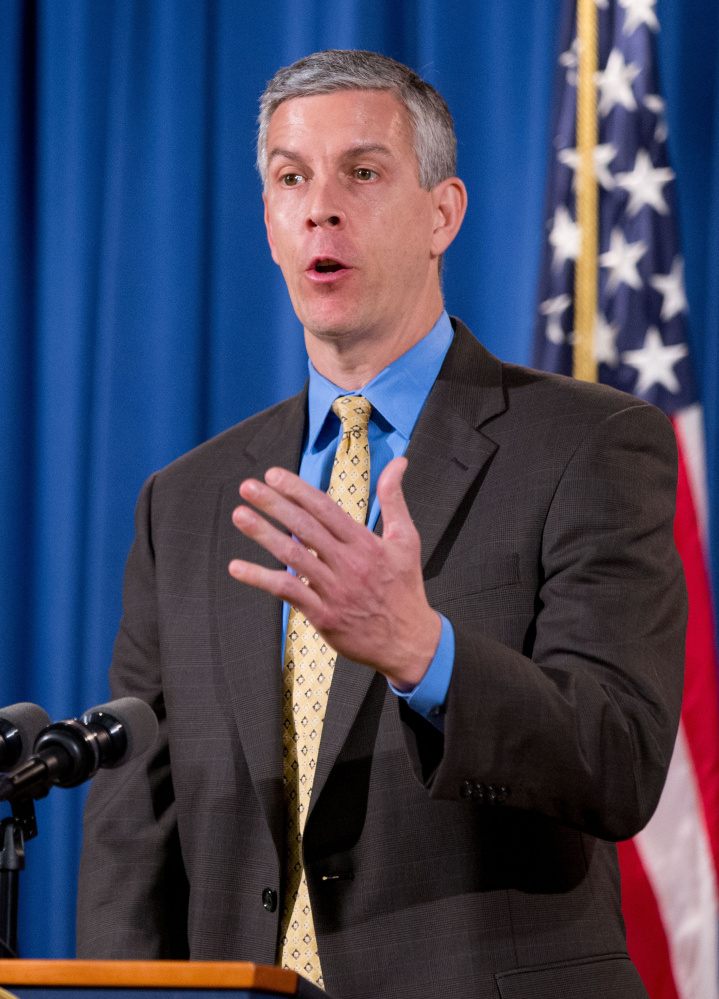The School Improvement Grants program spent billions but still failed to achieve meaningful results.
WASHINGTON — One of the Obama administration’s signature efforts in education, which pumped billions of federal dollars into overhauling the nation’s worst schools, failed to produce meaningful results, according to a federal analysis.
Test scores, graduation rates and college enrollment were no different in schools that received money through the School Improvement Grants program – the largest federal investment ever targeted to failing schools – than in schools that did not.
The Education Department published the findings on the website of its research division Wednesday, hours before President Obama’s political appointees walked out the door.
“We’re talking about millions of kids who are assigned to these failing schools, and we just spent several billion dollars promising them things were going to get better,” said Andy Smarick, a resident fellow at the American Enterprise Institute who has long been skeptical that the Obama administration’s strategy would work. “Think of what all that money could have been spent on instead.”
The School Improvement Grants program has been around since the administration of President George W. Bush, but it received an enormous boost under Obama. The administration funneled $7 billion into the program between 2010 and 2015 – far exceeding the $4 billion it spent on Race to the Top grants.
The money went to states to distribute to their poorest-performing schools – those with exceedingly low graduation rates, or poor math and reading test scores, or both. Individual schools could receive up to $2 million per year for three years, on the condition that they adopt one of the Obama administration’s four preferred measures: replacing the principal and at least half the teachers, converting into a charter school, closing altogether, or undergoing a “transformation,” including hiring a new principal and adopting new instructional strategies, new teacher evaluations and a longer school day.
The Education Department did not track how the money was spent, other than to note which of the four strategies schools chose.
Arne Duncan, Obama’s education secretary from 2009 to 2016, said his aim was to turn around 1,000 schools every year for five years. “We could really move the needle, lift the bottom and change the lives of tens of millions of underserved children,” Duncan said in 2009.
Duncan often said that the administration’s school improvement efforts did not get the attention they deserved, overshadowed by more controversial efforts to encourage states to adopt new standards and teacher evaluations tied to tests.
The school turnaround effort, he said days before he left office in 2016, was arguably the administration’s “biggest bet.”
He and other administration officials sought to highlight individual schools that made dramatic improvements after receiving the money. But the new study released this week shows that, as a large-scale effort, School Improvement Grants failed. Just a tiny fraction of schools chose the most dramatic measures, according to the new study. Three percent became charter schools, and 1 percent closed. Half the schools chose transformation, arguably the least intrusive option available to them.
Some education experts say the administration closed its eyes to mounting evidence about the program’s problems in its own interim evaluations.
Send questions/comments to the editors.



Success. Please wait for the page to reload. If the page does not reload within 5 seconds, please refresh the page.
Enter your email and password to access comments.
Hi, to comment on stories you must . This profile is in addition to your subscription and website login.
Already have a commenting profile? .
Invalid username/password.
Please check your email to confirm and complete your registration.
Only subscribers are eligible to post comments. Please subscribe or login first for digital access. Here’s why.
Use the form below to reset your password. When you've submitted your account email, we will send an email with a reset code.